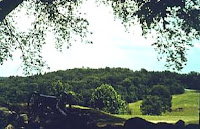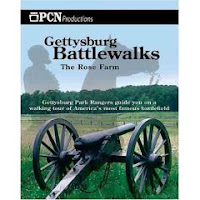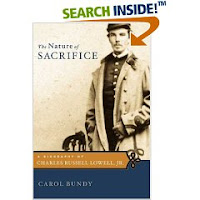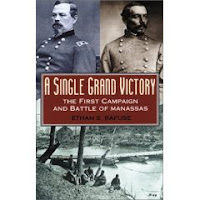
"The Hour Was One of Horror: East Cemetery Hill at Gettysburg," Archer, John M., 100 pp., b/w photographs, maps, appendix, endnotes, index, 1997, $10.00
About half of the East Cemetery Hill battlefield has been lost to development; a watertower, a high school and middle school, and a tour bus center may obscure a casual visitor's comprehension of this portion of the battle. "The Hour Was One of Horror: East Cemetery Hill At Gettysburg" by John Archer is essential in putting the strategic and tactical puzzle together when touring this part of the battlefield. When thinking of East Cemetery Hill, one may picture the Hancock statue, artillery redouts and the Evergreen Cemetery Gate House. Archer's book takes the reader much further than the crest of the hill. East Cemetery Hill was the first land to be set aside as a park, along with Culp's Hill; it is not surprising that public interest in these areas is lags behind the public interest in the Round Tops, Devils Den, and the High Water Mark areas. Though closest to town, economic development and the layout of the park roads do not encourage quick study of this segment of the battle.
The tactical and strategic circumstances of July 1st and 2nd are reviewed in the first quarter of the discussion; then Benner's Hill, the terrain of Early's advance, Brickyard Lane, the CSA breakthroughs at the base of the hill and again at the top, and repulse by USA reinforcements is presented. Archer's presentation of the East Cemetery Hill battle begins, not on the hill but streets of Gettysburg. The retreat of the Federal First and Eleventh Corps, on July 1st from west and north of town to Cemetery Hill, East Cemetery Hill, McKnight's Knoll and Culp's Hill clarifies the combat exhaustion and readiness of the Union forces which defend the Evergreen Gatehouse on July 2nd and 3rd. Archer's discussion of the placement of CSA troops in front of these positions and on Benner's Hill, east of Culp's Hill reveals the terrain and logistical problems that Ewell, CSA 2nd Corps commander had in coordinating the Confederate attacks. Benner's Hill on July 2nd became the platform for CSA artillery that aided the attacks on both Culp's and East Cemetery Hill. The Federal domination of the Confederate artillery on Benner's Hill is essential in understanding the heroic nature of the Rebel attacks, unsupported by artillery, Archer explains.
Though a tourbook with designated stops, Archer's work may be easily used as a general presentation of the combat. Ten maps guide both the armchair reader and the battlefield walker. These maps are original to the book and not generic; based upon the 1864 Bachelder Isometric Map, the 1869 Warren Survey Map, the 1876 Bachelder Maps, and the 1900 Cope Map, these maps are models of clarity and precise reinforcement of the text. Nearly forty historic and modern photographs and illustrations aid the reader in recollecting the site from the armchair or present the walker with the exact spot which soldiers' primary sources discuss. There are no portraits of commanders in the book; this is not lamentable. The text is consistently reinforced with the words of the rank and file soldiers. What is lacking in the book, but is probably on the reader's bookshelf or in the backpack, is an order of battle. The index is brief and adequate. The notes are thorough and add to the text. "The Hour Was One of Horror" is both a fine presentation of the combat and an essential guide to understanding the strategy of the battle, as it developed in the minds of the commanders. This book is highly recommended for the committed student of the battle.









